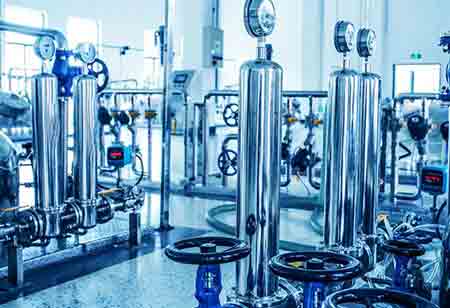FREMONT, CA: The chemical distribution industry, a vital component of the global supply chain, is facing heightened scrutiny regarding its environmental impact. As consumer awareness increases and regulatory pressures intensify, chemical distributors must implement sustainable practices.
Chemical distribution, which involves transporting, storing, and handling hazardous substances, carries inherent environmental risks. These risks include greenhouse gas emissions from long-distance transportation, water pollution from accidental spills or leaks, and waste generation from packaging materials and chemical residues.
Key strategies can be employed to foster a more sustainable chemical distribution industry. Sustainable transportation practices can significantly reduce carbon emissions by optimizing transport modes (e.g., rail or water) and routes through advanced logistics software. Investing in eco-friendly vehicles for urban deliveries can minimize environmental impact. Energy-efficient technologies like LED lighting, climate control systems, and space-efficient storage solutions can reduce energy consumption in warehousing. Waste reduction is also critical, with stringent waste management practices and recycling initiatives playing a key role.
Sustainable packaging solutions, including minimizing packaging materials, utilizing recyclable and biodegradable materials, and adopting reusable container programs, help reduce waste. Digital transformation can also drive sustainability, with real-time shipment tracking, paperless documentation, and predictive analytics optimizing logistics and reducing waste.
Responsible sourcing and ensuring partnerships with suppliers who prioritize sustainability and ethical sourcing practices are essential. Employee safety and sustainability education are also crucial in fostering a culture of environmental awareness and risk minimization.
Emerging technologies, such as blockchain for supply chain transparency, artificial intelligence for logistics optimization, and renewable energy sources to reduce reliance on fossil fuels, are vital in advancing sustainability within the industry. By adopting these strategies and leveraging cutting-edge technologies, chemical distributors can significantly reduce their environmental footprint, ultimately positioning sustainability as a moral obligation and a competitive advantage in an evolving market.
The regulatory landscape surrounding chemical products is becoming increasingly stringent as governments worldwide impose stricter environmental regulations on chemical handling, storage, and transportation. Distributors are now held accountable for the entire lifecycle of these products, from production to disposal, emphasizing the importance of comprehensive product stewardship. To effectively manage their environmental impact, organizations are encouraged to adhere to international standards, such as ISO 14001, which provide a framework for sustainable environmental practices.
Emerging trends that promote sustainability and operational efficiency shape the future of chemical distribution. In the circular economy context, chemical distributors can play a key role by supporting the recovery and recycling of chemicals and packaging materials. Additionally, integrating digital twin technology enables the simulation and optimization of warehouse operations, offering potential reductions in energy consumption and waste. Furthermore, green logistics solutions, including electric vehicles, drones, and autonomous vehicles, present a promising avenue to decrease emissions while enhancing operational efficiency.

